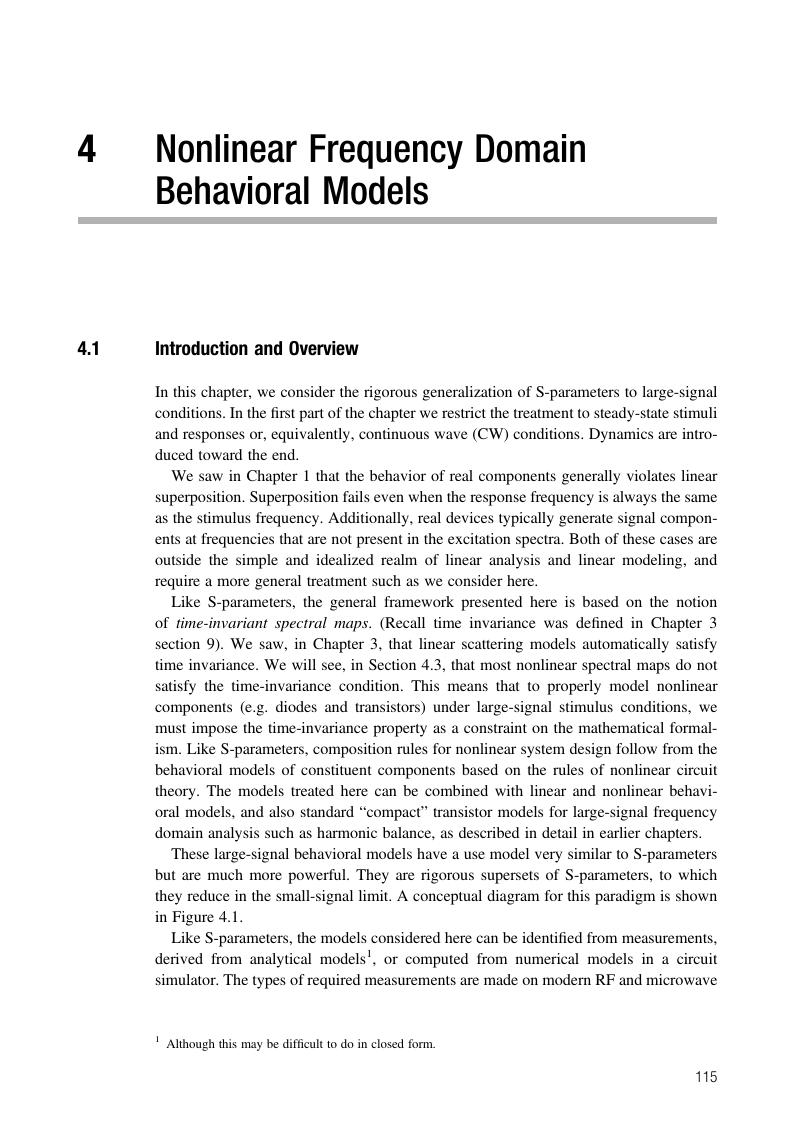Book contents
- Nonlinear Circuit Simulation and Modeling
- The Cambridge RF and Microwave Engineering Series
- Reviews
- Nonlinear Circuit Simulation and Modeling
- Copyright page
- Dedication
- Contents
- Preface
- Acknowledgments
- 1 Linear and Nonlinear Circuits
- 2 Basic Nonlinear Microwave Circuit Analysis Techniques
- 3 Linear Behavioral Models in the Frequency Domain
- 4 Nonlinear Frequency Domain Behavioral Models
- 5 Linear Device Modeling
- 6 Nonlinear Device Modeling
- 7 Nonlinear Microwave CAD Tools in a Power Amplifier Design Example
- Appendix
- Index
- References
4 - Nonlinear Frequency Domain Behavioral Models
Published online by Cambridge University Press: 07 June 2018
- Nonlinear Circuit Simulation and Modeling
- The Cambridge RF and Microwave Engineering Series
- Reviews
- Nonlinear Circuit Simulation and Modeling
- Copyright page
- Dedication
- Contents
- Preface
- Acknowledgments
- 1 Linear and Nonlinear Circuits
- 2 Basic Nonlinear Microwave Circuit Analysis Techniques
- 3 Linear Behavioral Models in the Frequency Domain
- 4 Nonlinear Frequency Domain Behavioral Models
- 5 Linear Device Modeling
- 6 Nonlinear Device Modeling
- 7 Nonlinear Microwave CAD Tools in a Power Amplifier Design Example
- Appendix
- Index
- References
Summary

Information
- Type
- Chapter
- Information
- Nonlinear Circuit Simulation and ModelingFundamentals for Microwave Design, pp. 115 - 180Publisher: Cambridge University PressPrint publication year: 2018
